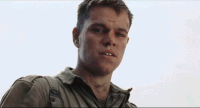orange808 wrote: ↑Mon Apr 07, 2025 5:24 pm I'm not really sure what you want in terms of pixel art, either. I assume you wanted EGA?
While I do love the EGA Monkey Island, I played it in VGA and I agree that era of Lucasarts is their most iconic. And it is pixel art. I'm going to be a bit lazy here because I have this sneaking suspicion that you are being somewhat contrarian and you actually do already know what pixel art is, but if you genuinely do not, here's the wikipedia article on it:
https://en.wikipedia.org/wiki/Pixel_art
The TLDR is that it is generally drawn pixel by pixel (or using pixel manipulation tools) in software designed to create frames this way.
The early 90s 256 VGA games, especially the adventure stuff like Lucasarts and Sierra, can be seen as the quintessential height of the original pixel art era (before it became an artform distinct from other forms of digital artwork). Where the line exactly gets draw tends to be a topic of debate, but that line only becomes blurry (to some people) in the late 90s/ early 2000s.
Once again, is it really the pixel art? Or is it just a general art design malfunction?
I had two hangups with the general design aesthetic. First of all, I think the art style made it more difficult for the characters to emote. The classic VGA art of LucasArts animation was much more expressive to my eye. The second problem is that I barely recognized the characters. They didn't look like themselves.
It's not really the paper dolls, it's just that they look wrong and they aren't nearly as animated and expressive as the characters I saw in MI2. It looks undercooked.
You're right about the limitations on the new art style; I don't think it lends itself well to character expression. While I don't think that the old pixel art stuff was a whole lot better at showing individual reactions to specific situations, it does (pixel art) have a much more complete set of idioms around handling that kind of emotional content in games, like the sound design (which you mentioned) and several kinds of graphical cues. Again, I think that it's the gestalt of pixel art that could have added so much to Return, and I still feel that it was a huge missed opportunity.
I don't disagree that the new style had it's own set of issues, but it's not really and either/or situation. I feel that Return would have benefitted from a pixel art presentation, outside of the poor puzzle challenges.
For me LucasArts was about the entire package. At the height of their powers, they had fully voiced high quality animation with excellent atmosphere from "golden age" Warner Bros cartoon style backgrounds and environments. I apologize, but I don't remember the artist's name that inspired it. You can instantly see the drop off if you watch anything Chuck Jones attempted afterwards, though. (That's something Jones himself lamented in later years. Those backgrounds and environments made a huge difference and the cost cutting of the 1960's and 1970's animation look rubbish by comparison to the WB golden years.) LucasArts did it on purpose, of course. They knew that was genius and they wanted that kind of style in their own games.
At least for the characters, the animation isn't as strong in the new Monkey Island and it's disappointing. LucasArts set a high bar.
Of course Lucasarts had a special sauce and there's a whole book worth of interesting stuff to talk about when it comes to their production values and their impact on the industry, etc, but I don't think it's reasonable to expect a MI game in the 2020s to match that. Looking at individual aspects of the game and critiquing them is one thing, but you have to expect it to be a different package, no matter what that package looks like.
Part of the reason that the early LA games were so good is because they had a fairly consistent aesthetic, and the ecosystem they lived in supported itself. If anything, that only supports my assertion that pixel art could only have helped to tap into existing game language and make the experience more relatable. As it is, the new art style is simply alienating.







